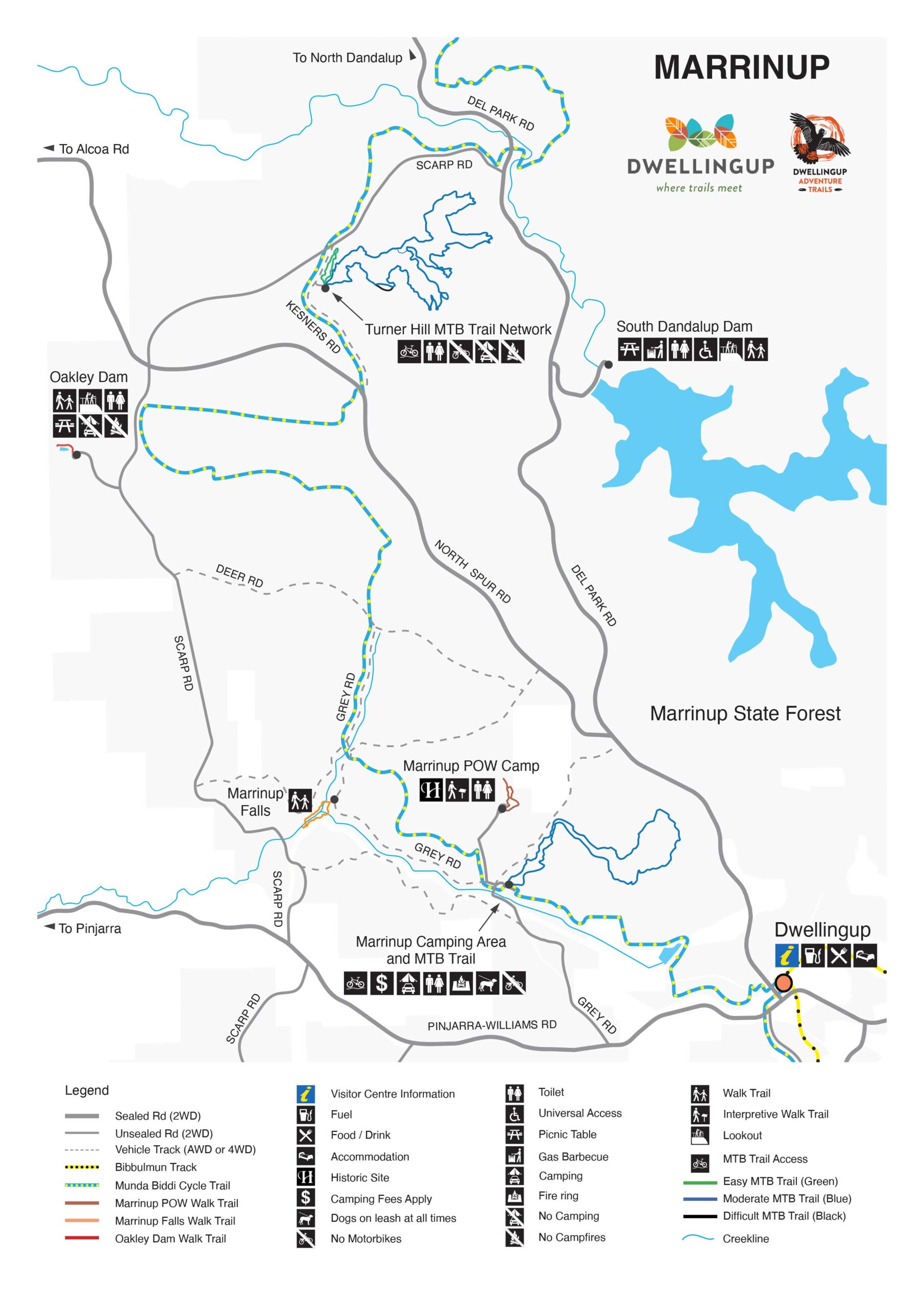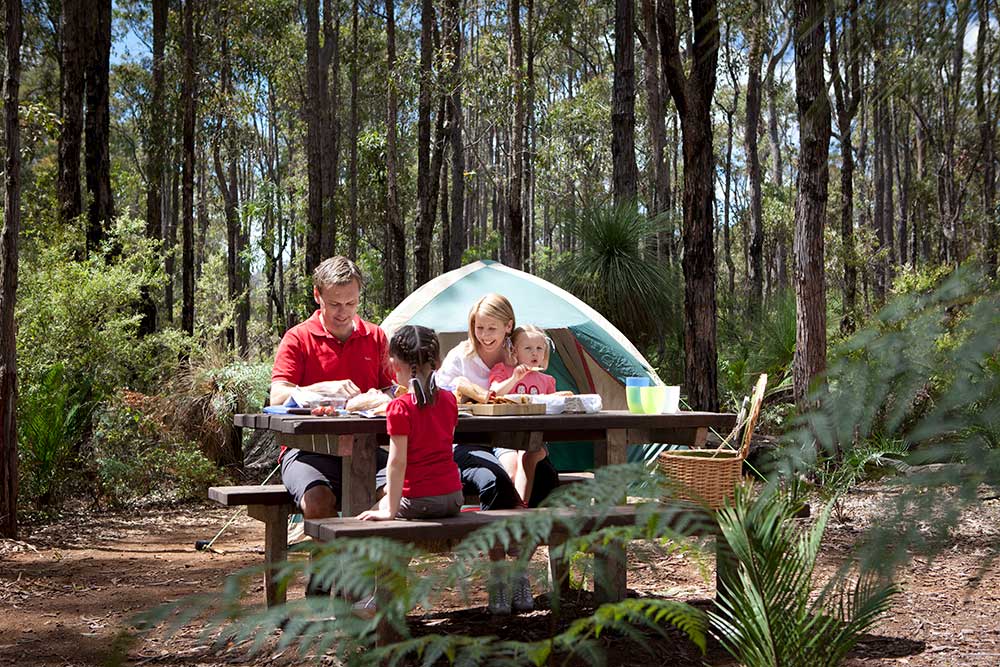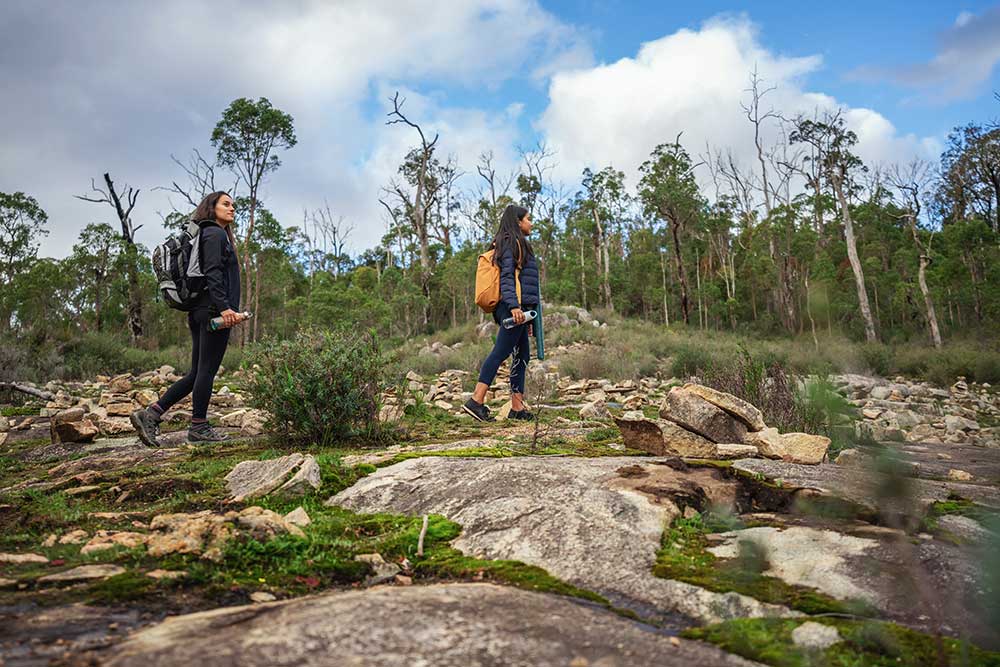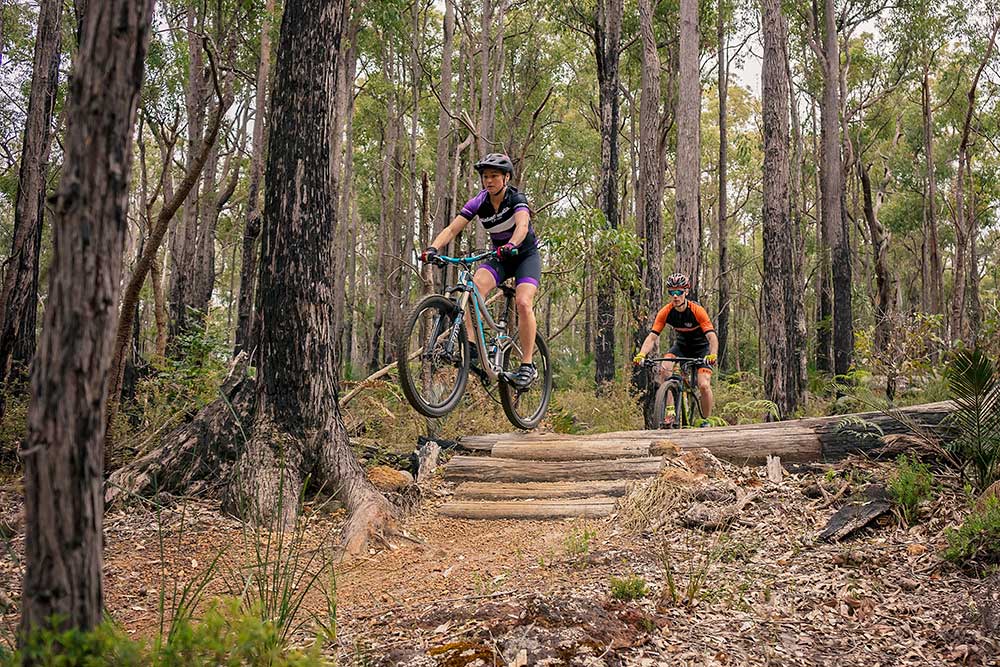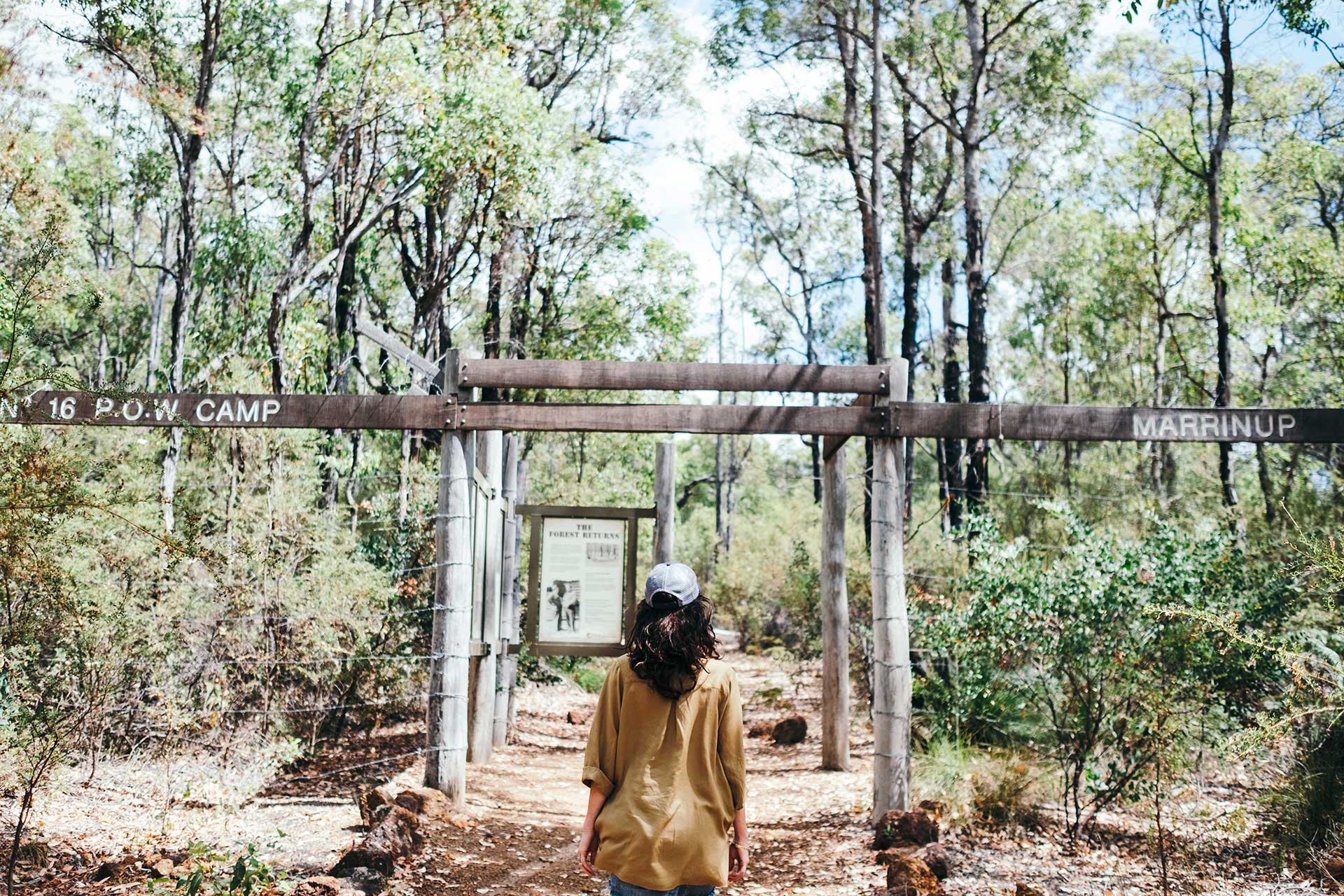More than a campsite
Let's plan your visit
There's nothing like the advice of a trusted local to help you make the most of your well earned break;especially in a wilderness area. Our team at the Dwellingup Trails and Visitor Centre can point you in the right direction to ensure that your visit is safe and great fun.

Where To Camp

Trail Conditions

Directions
What to see
Equipment Hire
Staying Safe
OLD MARRINUP TOWNSITE
The first sawmill at Marrinup was established in the 1880s by Charles Tuckey. In 1898, a steam-driven, 14-horse-power sawmill was opened by Hannans Milling Co., as well as a wooden railway transporting logs. The first rail was built from Pinjarra to Marrinup in 1902, transporting people and goods in, and timber out. Today, the line is still used by the Hotham Valley Tourist Railway. Marrinup gradually declined in size during the 1920s, while Dwellingup became the region’s major timber town. Marrinup was destroyed in the Dwellingup 1961 bushfires and the old townsite is now the Marrinup Campground.

